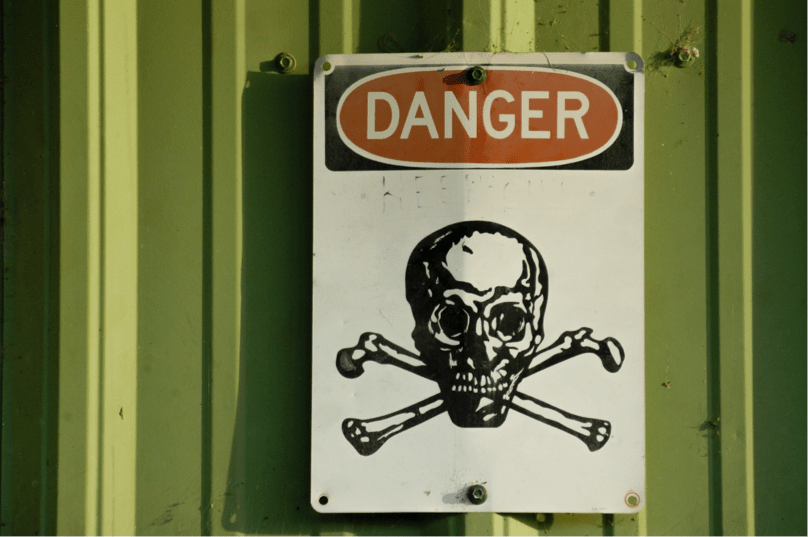Gucci handbags, Nike sneakers, Calvin Kline perfume, the list goes on. If it’s got a designer label there’s someone producing fakes by the thousands. Intellectual property and counterfeiting laws are understandably tough in most of the western world. That doesn’t stop businesses in countries where regulations are lax from producing imitation products. In 2017 the global market for counterfeit goods was estimated to be worth $461 billion each year. Consumers are either duped or in some cases knowingly buy these knockoffs, further emboldening this shadowy industry.

We’re starting to see the very same situation take hold in the vaping world too. Much to the dismay of top brands like Eleaf, Kangertech, and Innokin, their customer service departments are being inundated with emails and complaints. After a thorough investigation, they find their customers had been tricked into buying unofficial products through unverified retailers.
Every big city from London to Bangkok has a market renowned for fake goods and frequented by price-conscious locals or bargain-seeking tourists. A quick google search finds the same goods online – often at even lower prices – on sites like eBay and Alibaba. Of course, with cheap prices come hidden costs, both in terms of safety for consumers and reputation for legitimate vape retailers and manufacturers.
Why Do Imitation Vape Tanks Even Exist?
Regulation has yet to arrive in any meaningful way, in an industry that is still in its inaugural years. Dealing with illegal drugs, fake medicines, and counterfeit designer goods suck up so many resources that customs officers and law enforcement agencies have yet to show much interest in vaping. That leaves a mountain of opportunity for unscrupulous manufacturers looking to create a quick buck copying the latest sub-ohm tank. The responsibility doesn’t lay solely at enforcements feet, however. Buyers can also contribute to a demand for fake, and often dangerous goods, in three main ways:
Poor buying habits and carelessness when making a new product only serve to drive demand for dodgy manufactures. You wouldn’t buy alcohol or medication from an unlicensed dealer, but many shoppers seem to turn a blind eye when searching for vape tanks. That’s not to say that you won’t find official products on sites like eBay, Alibaba, or DealExtreme – it’s just that there are way too many unreliable fly-by-night sellers for you to make the right purchase every time. Unless you’re an expert and can exercise complete vigilance it’s highly possible that you’ll finish up with a fake.
Keeping up with the Joneses is as important in the world of vaping as it is anywhere else. With manufacturers updating and releasing new high-end mods every few months, the pressure to own the latest and greatest hardware is almost impossible not to bow down to the pressure.
Shoestring budgets or just downright tightfistedness further embolden the black market as vapers knowingly go shopping for imitation vaping equipment. With almost 16% of college students admitting to vaping during the last 30 days, that’s a huge user-base of frugal customers for knockoff suppliers to take advantage of.
Black Market Tanks – What Could Go Wrong?

Incompatible output ratings can cause serious unintended consequences. Each vape mod has it’s own output rating (wattage and voltage) and is only designed to work with tanks that are also matched to those specific ratings. Low-quality imitation tanks are unlikely to have been designed to match the specifications of the genuine product they were produced after. This can result in minor annoyances like random shutdowns, to way more disastrous repercussions like overheating and explosions.
Dry and burnt hits can negatively impact your vaping experience – and shady manufacturers value their bottom-line way more than your enjoyment. While legitimate coils are manufactured from high-quality metals or alloys and are precision engineered to operate at specific levels of resistance (measured in ohms), these counterfeit tanks have no guarantee on the quality of materials used in the manufacturing project. This means sub-standard vaping, poor flavors, and maybe even a sore throat to boot.
How You Can Avoid Purchasing a Fake Tank
Use reputable retailers who have a large customer base and plenty of reviews on independent sites. Look for a physical address and check that the company is officially registered in the state it operates in. If in doubt head straight to your local store, you’ll be able to chat directly with staff and return products in case anything goes wrong. If you’re set on purchasing online, check for a seller’s verified status on sites like Amazon.
Check the label and packaging for tell-tale signs. Many fake products can easily be spotted by poor printing or careless spelling mistakes on the label. Nowadays, most vape manufacturers include scratch-off codes or QRs for verification – so it’s definitely worth taking advantage of this where possible.
Don’t cheap out and remember that if something looks too good to be true, it probably is!



